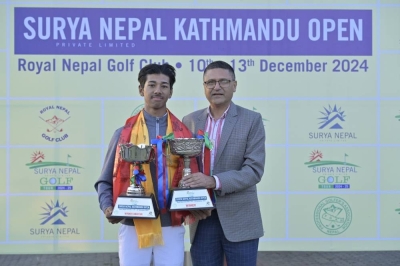Women and turbulent history
In the past few months, I attended various national and international seminars and conferences in South Asia. I was overwhelmed by the fields covered by wo-men, and by their recount of experiences acquired by working with other women in various fields. What I noticed was a search for a general identity as women and particular identities within a local context. Each nation’s history found reflections in their individual discourses. My discourse was generated by the conflict in my own country. The most important thing for me was that at these international forums the political and public presence of women was recognised. The vibrancy of the NGO sectors and their public involvement in the respective countries assured me that NGO sector can hold great potential for a future civil society in my own country too.
But at home, I saw women hardly venting their anger or despair or showing any awareness of their political context. Adversely, for me, this made me aware of my own ‘location’. To be aware of my location also means for me to be aware of what percentage of women are actually in the public scene. Why are women in Nepal unable to articulate their views, or vent their frustrations in order to make a difference? Is it the time now to say that the process of decision-making should be structured along different lines so that it can bring a difference to the public scene?
In spite of all the money spent by donor agencies and rhetoric about women, women are still visually absent from the public scene. What is it that makes up the public scene? Political parties or government institutions or even parliament? What percentage of women is it who have actually entered the public, in order to make a difference to the country? It is the NGOs and other social organisations, especially run by women that should take up the cudgel in the public sphere and work towards creating an open civil society.
Women working in the NGO sector have been strengthening and energising the institutions they have established. The work they have been doing could, in fact, work as a destabilising factor for all the political centres and their activities. It is women with their income generating activities promoted primarily by NGOs that have lent them power to put together disintegrating communities and families. And, it is because of these organisations that the world capitalism mobilisation has found its inroads into the conflict affected zones and women there have performed extremely well. But what is happening in Nepal over the past few months does not bode well for these women who will still have to take up greater responsibilities in the process of nation building.
Open discussions as analysts or activists are the most important requirements, but women should effectively make way for decision-making as well and not only to form an opinion, otherwise the whole process will be politically ineffective. Women have suffered the most in the political cyclones. The question is, has this turbulent period recognised women’s political subjectivity? My impression is that it has only made women the recipients of the entire brunt of the tumultuous period in recent history. So, the NGOs should once again approach wo-men’s own problems directly, and not through some Janus-faced male schemata, and develop agenda for women’s amelioration.





